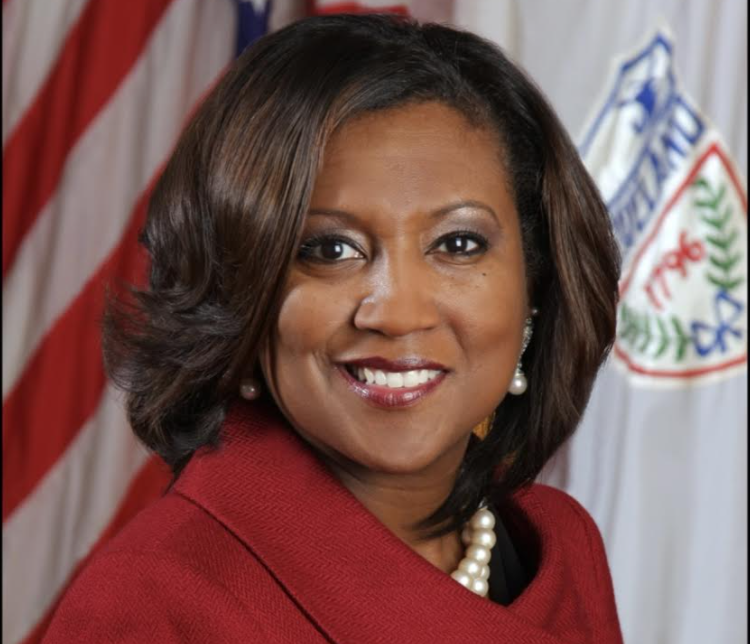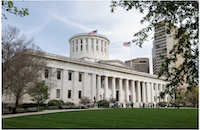A majority of respondents are leery of the president’s tariff policies
One hundred days into his second presidential term, Donald Trump’s support in Ohio is softening.
Just two months ago, the president’s approval rating was six points higher than disapproval. Now he’s under water.
Although job approval is a different question than who to back in an election, it’s a notable deficit for someone who won the state by 11 points last November.
“Consistent with many national polls, we find that Trump has lost considerable support over his first 100 days, suggesting his honeymoon was short-lived,” Bowling Green State University political scientist Robert Alexander said. “Having a net negative favorability rating in a state he won by 11 points should be of concern for Trump nationwide.”
Alexander also said if the numbers continue to slide, “we can expect the hopes of Democrats in Ohio to increase as they look to the 2026 election.”
The data comes from a poll conducted by BGSU’s Democracy and Public Policy Network. Pollsters contacted 800 registered voters from April 18-24 and the poll has a margin of error of +/- 4 percentage points. The bulk of their contacts were people they previously polled in February; 235 respondents had not been contacted before.
Voters' impression of the first 100 days
The April survey shows Trump’s base of supporters remains intact, while independents and Democrats are disenchanted with his performance.
On a handful of broad qualitative question regarding respect for the country abroad, anxiety levels of respondent and whether Trump’s performance has compared to expectations, the negative responses led, but fell short of a majority.
BGSU political scientist Melissa Miller said, despite Republicans’ 2024 double-digit victory in Ohio, “Trump administration policies appear to be a mixed bag in the Buckeye State.”
A majority of respondents supported federal recognition of only two sexes, and declaring an emergency at the U.S.-Mexico border. But most respondents opposed renaming the Gulf of Mexico, withdrawing from the World Health Organization and pardoning Jan. 6 defendants.
Tariff policy, however, was a glaring exception. A majority opposed Trump’s 25% tariff on Canada and Mexico, but offered support for a 10% tariff on China. As of April 9, the import duties on most Chinese goods sit at 145%. According to the White House some goods will face a 245% tariff.
By a 2-to-1 margin, the poll’s respondents said tariffs will hurt them personally, and 49% said the policy will hurt the United States. Just 38% said tariffs will be beneficial for the country. Respondents were also dubious about who stands to gain from the policy. Sixty percent said the benefits will flow to the wealthy and large corporations. Meanwhile, majorities agreed that tariffs will harm small businesses, labor unions, the middle class, the working class, and the car industry.
“No matter how you look at it,” Alexander said, “Ohio voters do not like what they are seeing with Trump’s tariff policies.”
Peeking ahead to 2026
Pollsters asked about the upcoming governor’s race, as well. Among Republican candidates, entrepreneur and former presidential candidate Vivek Ramaswamy leads the field by a vast margin. Lt. Gov. Jim Tressel and Attorney General Dave Yost garnered 14% and 13% support respectively, while Ramaswamy has the backing of 64% of GOP voters.
All three Republican candidates have an edge over the only declared Democratic candidate, former Ohio Department of Health director Amy Acton. The poll suggests Acton, a first-time candidate, has work to do consolidating Democratic support. Given the choice, 59% of respondents said they’d prefer former U.S. Sen. Sherrod Brown as the nominee to Acton’s 20%. Former U.S. Rep. Tim Ryan got 16% of the total.
Miller argued there are warning signs in their figures about distrust in the federal government. Among Republicans, that figure ticked upwards slightly, but within the margin of error. For Democrats and independents the increase was larger.
“While rising distrust in the federal government among Ohio Democrats is not particularly surprising,” Miller argued, “the 8-point increase in distrust among independents between February and April could have real consequences. Independents tend to be the holy grail in U.S. elections.”
• • •• • •
This story is provided by Ohio Capital Journal, a part of States Newsroom, a national 501(c)(3) nonprofit. See the original story here.
















